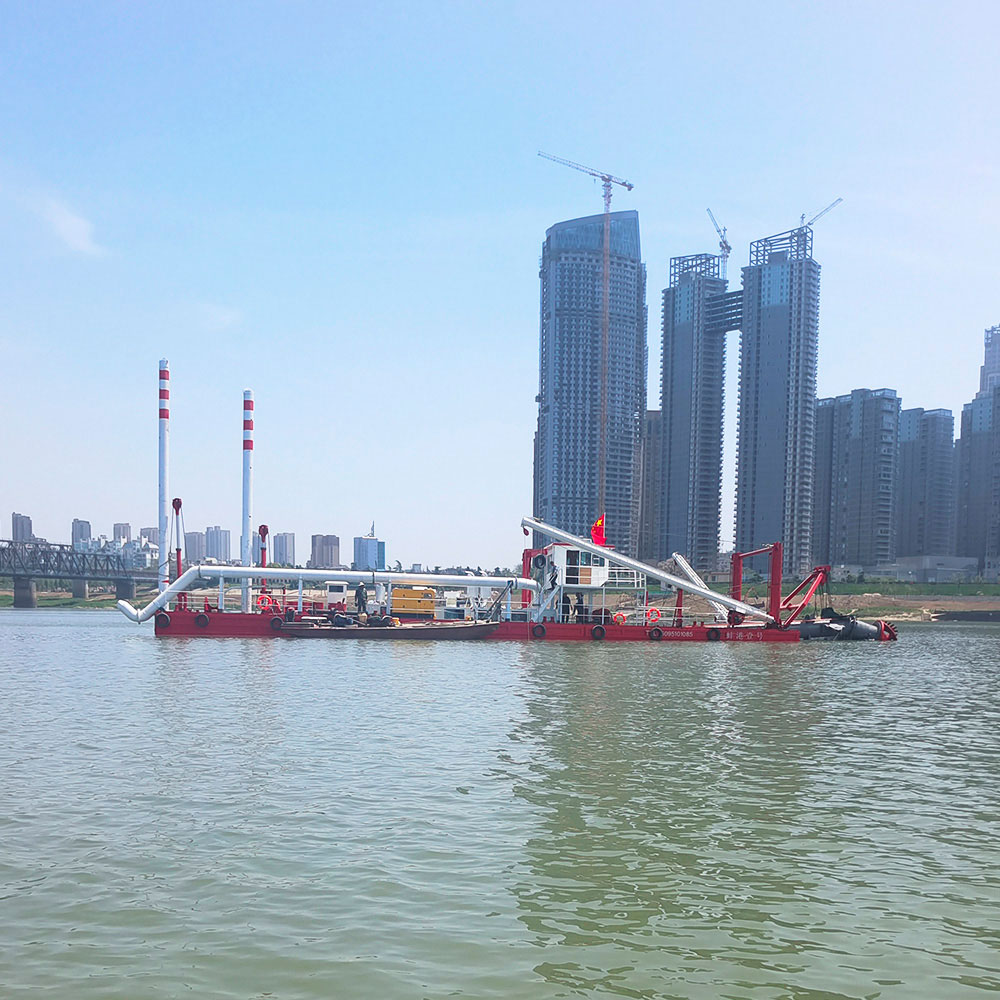What Is a Cutter Suction Dredger and How Does It Revolutionize Dredging Operations in Waterway Management?
2025-02-22
Dredging plays a crucial role in maintaining the navigability and health of waterways, ports, and harbors around the world. But how do companies manage to remove sediment, rocks, and debris from the bottom of rivers, lakes, and oceans efficiently? The answer lies in a powerful and versatile piece of machinery known as a cutter suction dredger (CSD). But what exactly is a cutter suction dredger, and how does it revolutionize dredging operations in waterway management?
A cutter suction dredger is a specialized type of dredging vessel designed to remove sediment and other materials from underwater locations. Unlike other dredging methods, CSDs are equipped with a rotating cutter head that loosens the material, which is then sucked up by a powerful pump and transported to a designated disposal area. This technology has become indispensable in a range of industries, from maintaining shipping lanes to land reclamation projects, and even in environmental restoration.
Let’s dive deeper into the features, functionality, and applications of cutter suction dredgers to understand why they are such an integral part of modern dredging operations.
What Is a Cutter Suction Dredger?
A cutter suction dredger is a floating vessel equipped with a specialized cutting mechanism at the front, known as the cutter head, which can rotate at high speeds to break up the sediment or materials on the seabed. Once the material is loosened, it is sucked through a large suction pipe by a pump, which transports it to a designated location, either for disposal or further processing.
The cutter head can be designed to handle various types of sediment, including sand, silt, clay, and even harder rock. This flexibility allows cutter suction dredgers to work in a wide range of underwater environments, from shallow rivers to deep-sea dredging projects.
Key Features of Cutter Suction Dredgers
1. Cutter Head: The cutter head is the primary feature that differentiates CSDs from other types of dredgers. It consists of rotating blades that can break up compacted sediment or rock. The ability to cut through dense material allows CSDs to tackle more challenging dredging conditions.
2. Suction Pipe and Pumping System: After the cutter head loosens the material, the suction pipe collects the debris and transports it through a pump. This suction system is powerful enough to move large quantities of material, which can then be deposited or processed.
3. Hydraulic Power: Cutter suction dredgers rely on hydraulic power to operate both the cutter head and the pumping system. This hydraulic system allows for precise control and operation, making it possible to dredge with high efficiency and accuracy.
4. Floating Platform: Most cutter suction dredgers are designed as floating vessels, allowing them to operate in shallow waters. Some models are also equipped with anchors or spuds that help stabilize the dredger in place while working.
5. Depth Adjustment: The dredging depth of a cutter suction dredger can be adjusted based on the needs of the operation. Some advanced models can dredge to depths of more than 20 meters (about 66 feet).
How Does a Cutter Suction Dredger Work?
The operation of a cutter suction dredger involves several key steps:
1. Positioning: The dredger is anchored in position at the dredging site, often in shallow or coastal waters. Some vessels are equipped with spuds, which are large stakes that help keep the vessel in place.
2. Cutter Head Activation: The cutter head, located at the front of the dredger, is lowered into the water and begins rotating. This action cuts and loosens the material at the seabed.
3. Suction Process: Once the sediment is broken up, a suction pipe connected to the dredger begins to draw the loosened material up. The material is then transported through a pump to the designated disposal or processing area.
4. Material Disposal: Depending on the project, the dredged material can be transported to a nearby location for disposal or used in other applications, such as land reclamation or beach nourishment.
What Makes Cutter Suction Dredgers Unique?
Cutter suction dredgers offer several advantages over other dredging technologies:
- Versatility: CSDs can handle a wide range of materials, including soft sediments like mud and sand, as well as harder substances such as gravel and rock. This makes them ideal for various dredging tasks, from maintaining shipping channels to creating artificial islands.
- Precision: The cutter head can be controlled with high precision, allowing for detailed dredging operations in challenging underwater conditions. This makes CSDs perfect for tasks that require exact measurements, such as deepening harbors or removing obstructions.
- Efficiency: The combination of cutting and suction allows CSDs to work quickly and effectively. By breaking up the sediment and immediately pumping it out, cutter suction dredgers can remove large volumes of material in a short amount of time.
- Environmental Impact: Compared to other dredging methods, such as hydraulic dredging, CSDs are considered to have a lower environmental impact. They are less likely to disturb the surrounding ecosystem because the material is directly sucked up and transported without causing large-scale sediment resuspension.
Applications of Cutter Suction Dredgers
Cutter suction dredgers have a wide array of applications, which include:
1. Channel Maintenance: One of the primary uses of CSDs is in the maintenance of navigational channels. They help ensure that shipping lanes remain free from obstructions, allowing vessels to pass through safely.
2. Land Reclamation: CSDs are frequently used in land reclamation projects, where large amounts of dredged material are used to build up land in coastal areas, creating new spaces for development.
3. Port and Harbor Development: To accommodate larger vessels, ports and harbors often require deepening, which is efficiently carried out using cutter suction dredgers.
4. Environmental Restoration: CSDs can also be used to remove polluted sediments or other contaminants from waterways, aiding in environmental cleanup efforts.
Conclusion
Cutter suction dredgers have revolutionized dredging operations, providing an efficient, versatile, and environmentally friendly solution for waterway management. From maintaining navigational channels to creating land for urban development, the cutter suction dredger plays a critical role in shaping the world’s waterways. As industries continue to face the challenges of sediment management, the cutter suction dredger will undoubtedly remain a key tool in ensuring that our aquatic environments are kept navigable and sustainable for generations to come.



